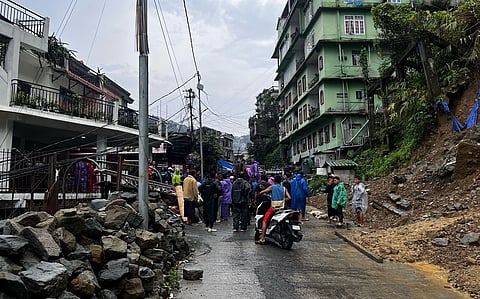

Mizoram is currently facing a severe monsoon crisis, with 598 landslides reported across the state since May 24, according to the state disaster management and rehabilitation department. Continuous heavy rainfall has caused widespread damage, displacement, and loss of life.
A total of 171 houses have been damaged, while 244 people were evacuated due to landslides and another 119 due to flooding. There are 257 areas across the state where road blockages have been reported. Graveyards in three localities were also damaged. Five lives have been lost in incidents related to the landslides.
Champhai district, which borders Myanmar, recorded the highest number of incidents at 209, followed by Serchhip with 116, Khawzawl with 75, and Lunglei with 61. Aizawl reported the lowest with 21.
The state government has issued a travel advisory asking all visiting dignitaries and officials to postpone planned visits until June 13, 2025. This comes amid warnings from the regional meteorological centre in Guwahati, which has forecast continued heavy to very heavy rainfall in the coming days.
Mizoram’s disaster management and rehabilitation minister Lalnilawma visited the state emergency operation centre in Aizawl to monitor relief efforts. He announced that the government plans to provide ex gratia payments of Rs 4 lakh to the families of those who lost their lives. “It is comforting to see tlawmngaihna (Mizo for ‘spirit of service’) in action during this critical time,” he said, referring to the acts of selfless assistance provided by local volunteers.
In Ramlaitui village, over 100 travellers were stranded when landslides blocked the road. Local residents opened their homes to them. “They divided us in groups of five and took us into their homes,” said Lalnunthara, one of the stranded. “We were given free meals, warmth, and kindness that I’ll never forget.” He added, “As a Mizo, I had expected such assistance—because that is tlawmngaihna.”
In Sialsuk, the number of stranded people rose from 300 to over 600 by June 1. Local families housed guests, the village council coordinated supplies, and meals were provided by the community.
Authorities have also relocated machinery from multiple public health engineering pump houses due to rising flood risk. Lalnilawma urged the public to use water judiciously and to consider harvesting rainwater, noting possible contamination in the Tlawng river.
District disaster management authorities and local volunteers remain engaged in rescue, relief, and rehabilitation operations across the state. As heavy rains continue, the situation is being closely monitored.